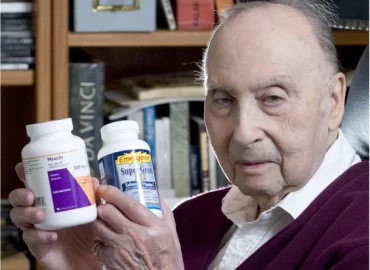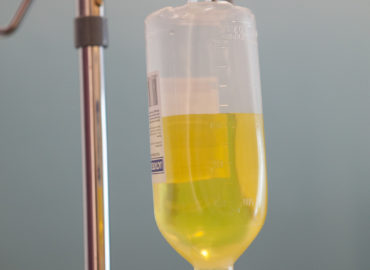Probl Endokrinol (Mosk). 1994 Jan-Feb;40(1):41-3.
[Body niacin status in experimental diabetes mellitus; effect of protein level in the ration]
[Article in Russian]
Sadykova RE, Kodentsova VM, Dreval’ AV.
Administration of a high-protein diet providing 7-7.8 g of tryptophan per kg of the ration to rats with streptozotocin and alloxan diabetes mellitus resulted in development of a trend to increased liver content of nicotinamide coenzymes and in increased 1-methylnicotinamide excretion with the urine in both groups of animals, this reflecting increased niacin synthesis from tryptophan.
Sugar-reducing effect of high-dose nicotinamide was not potentiated by Increase of protein share in the ration. These results permitted the authors to suggest that intensification of endogenous niacin synthesis from tryptophan contained in the ration may be one of the mechanisms of a protective effect of high-protein diets in diabetes.
Indian J Pediatr. 1993 Nov-Dec;60(6):825-7.
Comment in: Indian J Pediatr. 1994 Jul-Aug;61(4):441-2.
Early onset juvenile diabetes mellitus controlled with nicotinic acid therapy.
Karmarkar DP, Rajput CS, Wagh SS, Kelkar PS.
Department of Pediatrics, Government Medical College, Miraj and Civil
Hospital, Sangli. Case Reports
Experientia. 1988 Jan 15;44(1):38-40.
Effect of niacin/nicotinamide deficiency on the diabetogenic effect of streptozotocin.
Wright JR Jr, Mendola J, Lacy PE.
Department of Pathology, Washington University School of Medicine, St. Louis, Missouri 63110.
Weanling CD-1 mice were fed either a control diet or a diet deficient in niacin/nicotinamide for one month and then injected i.v. with 60, 80, 100, 120, 140, or 160 mg/kg streptozotocin. Mice on the deficient diet developed a higher incidence of diabetes and more severe hyperglycemia than those on the control diet.
Diabetes. 1988 Jan;37(1):28-32.
Additive hypoglycemic effects of drugs that modify free-fatty acid metabolism by different mechanisms in rats with streptozocin-induced diabetes.
Reaven GM, Chang H, Hoffman BB.
Department of Medicine, Stanford University School of Medicine, Palo Alto, California.
In this study the effect of two drugs [etomoxir and nicotinic acid (NA)] on plasma glucose, free-fatty acid (FFA), and triglyceride (TG) concentrations was determined in rats with streptozocin (STZ)-induced diabetes. The two compounds modify FFA metabolism by different mechanisms, etomoxir (ethyl-2-[6-(4-cholorophenoxyl)-hexyl]oxirane-2-carboxylate) by inhibiting hepatic fatty acid oxidation, and NA by inhibiting lipolysis in adipose tissue.
Diabetes was induced in male Sprague-Dawley rats, weighing approximately 400 g, by STZ injection (30 mg/kg i.v.), and the metabolic effects of the two drugs were studied 7-10 days later. The acute administration of either etomoxir or NA lowered plasma glucose concentrations in diabetic rats by approximately 150 mg/dl (P less than .001) in 4 h. However, the two drugs differed dramatically in their effects on plasma FFA and TG concentrations. Specifically, etomoxir produced striking increases in plasma FFA and TG concentrations, whereas NA administration caused a marked decrease. However, when NA was given in conjunction with etomoxir, NA prevented the increase in plasma FFA and TG concentration seen with etomoxir; the combination of NA and etomoxir approximately doubled the decrease in plasma glucose concentration produced by NA or etomoxir when given alone. Because plasma insulin concentrations did not change in response to either drug, whether administered singly or in combination, these metabolic effects do not result from a change in insulin secretion. These results suggest that modulation of FFA metabolism at the level of the adipocyte or the liver can have dramatic effects on carbohydrate and lipid metabolism.

.jpg)
.jpg)


